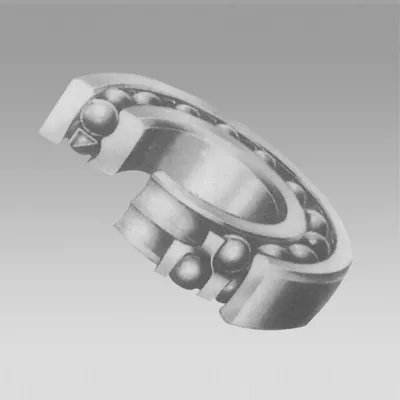
Dec . 26, 2024 10:14 Back to list
Single Row Deep Groove Ball Bearings Technical Guide and Specifications
Understanding Single Row Deep Groove Ball Bearings A Comprehensive Overview
Single row deep groove ball bearings are one of the most commonly utilized types of rolling bearings, known for their versatility, reliability, and efficiency in a variety of applications. These bearings are designed to support both radial and axial loads in a wide range of operating conditions, making them ideal for various industrial and mechanical applications.
Structure and Design
A single row deep groove ball bearing consists of an outer ring, an inner ring, a cage (also known as a retainer), and rolling elements, which are typically balls. The deep groove design allows for a deeper raceway that accommodates a higher number of balls. This configuration not only increases the load-carrying capacity but also improves the bearing’s resistance to shock loads. The inner and outer rings' surfaces are precisely crafted to minimize friction, which is crucial for enhancing the bearing's operational efficiency and lifespan.
Material and Manufacturing
These bearings are primarily made from high-grade steel, although variations of materials may include stainless steel, ceramic, or polymer composites, depending on the application requirements. The manufacturing process involves stringent quality control measures to ensure dimensional accuracy and surface finish. Advanced techniques such as heat treatment and surface hardening are applied to enhance the performance characteristics, including wear resistance and fatigue life.
Applications
Single row deep groove ball bearings are extremely versatile and can be found in a multitude of applications across different industries. These include electric motors, automotive components, agricultural machinery, conveyor systems, and various machine tools. Since they can accommodate both radial and axial loads, they are particularly useful in situations where space is limited but load demands are high.
single row deep groove ball bearing catalogue

Why Choose Deep Groove Ball Bearings?
One of the key advantages of single row deep groove ball bearings is their simplicity in design, which translates to easy installation and maintenance. Moreover, their low friction characteristics lead to energy savings in operation, making them a cost-effective choice for many manufacturers. The bearings are also capable of operating at a wide temperature range, allowing them to function effectively in both moderate and harsh environments.
Performance Considerations
When selecting a single row deep groove ball bearing, it is essential to consider various factors such as the load type, speed, environmental conditions, and the required lifespan of the bearing. Factors like lubrication also play a critical role; appropriate lubrication solutions can enhance performance by reducing friction and facilitating heat dissipation.
Maintenance and Lifespan
To ensure optimal performance and longevity, regular maintenance of the bearing system is essential. This includes periodic inspections, checking for wear or damage, and ensuring that the lubrication is replenished as necessary. With proper care, single row deep groove ball bearings can have a remarkably prolonged lifespan, providing reliable service over time.
Conclusion
In summary, single row deep groove ball bearings represent a fundamental component in modern engineering and manufacturing. Their unique design, coupled with a wide range of applications and ease of maintenance, makes them an indispensable part of countless machinery and equipment. As industries continue to evolve, the demand for high-performance bearings will persist, ensuring that single row deep groove ball bearings remain at the forefront of bearing technology.
Latest news
-
Grooved Ball Bearing Design and Functionality
NewsJun.04,2025
-
Concrete Mixer Bearing Load Capacity Testing
NewsJun.04,2025
-
6004 Bearing Dimensions in Robotic Joint Designs
NewsJun.04,2025
-
Advantages of Single-Row Deep Groove Ball Bearings
NewsJun.04,2025
-
Applications of Deep Groove Ball Bearings in Automotive Systems
NewsJun.04,2025
-
Innovations in Bearing Pressing Machine Design
NewsJun.04,2025
